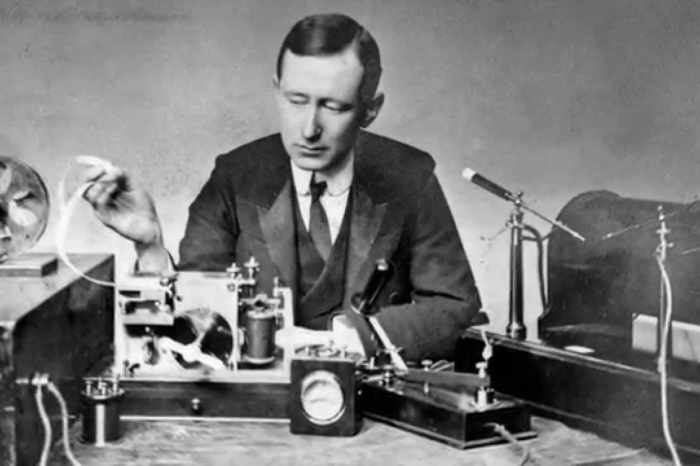Guglielmo Marconi and the importance of innovation and choice in education
By Jamie Gass and Ze’ev Wurman
May 1, 2019
This op-ed appeared in multiple regional news outlets including the Springfield Republican, MetroWest Daily News, the Lowell Sun, the Fitchburg Sentinel & Enterprise, the Patriot Ledger, and more.
“I seemed to have a special… aptitude for mechanics, physics, and chemistry,” wrote the brilliant early 20th-century engineer, inventor, and founder of global communications Guglielmo Marconi, “which were not taught at the school I regularly attended.”
April marks the 145th celebration of Marconi’s birth in Bologna, Italy, and this year is the 110th anniversary of his winning the Nobel Prize in Physics. He was the first person to systematically use radio waves to communicate over long distances, develop wireless telegraphy, and is considered the “father of radio.”
Today, our world of smart phones, Bluetooth, Wi-Fi, satellite TV and radio, Global Positioning Systems, and wireless computer networking was largely imagined by and based on Marconi’s electrical experiments.
Born to an Italian nobleman and an Irish mother, whose family owned the famous Jameson whiskey distillery, young Marconi was a prodigy educated by private tutors. He never attained any higher educational credentialing.
Marconi said reading about the sea voyages of 18th-century British explorer Captain James Cook and a biography of America’s lightning-rod inventor Benjamin Franklin inspired his early intellectual curiosity.
He also credited his tutor, Vincenzo Rosa, for teaching him higher-level mathematics, physics, and electromagnetic engineering. Students should know about Marconi’s farsightedness and how he pioneered the wireless communication that powers our modern world.
Nowadays, millions of families across America seek alternative school choices to ensure their children learn the science, technology, engineering, and math (STEM) necessary for the 21st century’s interconnected global economy.
According to federal figures, there are 56.6 million American students in K-12 schooling. Those families who can opt for school choices often do: 5.9 million attend private and parochial schools, 3.2 million are in charter public schools, 2.7 million access formal online learning, and 2.3 million are homeschooled.
Research demonstrates that countless numbers of suburban parents also choose private math tutoring models from Asia and Europe, including Kumon and the Russian School of Mathematics, to ensure their children have the advanced math skills Marconi’s parents sought for him over a century ago.
Limited school choice options for economically-disadvantaged kids coupled with mediocre academic quality in STEM and the humanities are major reasons why American public education has long lagged far behind its international competitors.
“If we consider what science already has enabled men to know – the immensity of space… the infinite smallness of the composition of atoms…,” Marconi wrote, “we remain astounded by the enormous machinery of the universe.”
Ultimately, Marconi’s experiments showed that certain radio waves can conform to the Earth’s curvature by bouncing off a layer of the atmosphere, which allowed him to develop devices that transmitted messages over long distances.
Biographer Marc Raboy’s Marconi: The Man Who Networked the Worldtells us he went to Britain, received the first patent for wireless telegraphy, and built a global communications business empire.
On his way to success, Marconi sought the advice of renowned American inventors Thomas Edison and Alexander Graham Bell. He also built on the innovations of the Boston-born Samuel Morse, who in 1836-38 developed the electric telegraph machine and his famous code.
In late 1901, Marconi’s team used Morse’s code for the letter “S” when sending and receiving the world’s first wireless trans-Atlantic radio signal over the 2,200 miles between Poldhu, England and St. John’s, Newfoundland. Two years later on Cape Cod, he relayed a message from President Theodore Roosevelt to King Edward VII in Great Britain, marking the first transoceanic signal originating from the United States.
Regrettably, these days American K-12 education runs on weak curriculum standards. Consequently, it transmits lots of vacuous education school fads, including “whole child” education, 21st-century skills, and social-emotional learning.
National test scores reveal that America’s kids are struggling due to poor quality academic content in schools. Students rarely read entire books about historically significant inventors and have difficulty with the higher-level math that is the foundation of the global knowledge economy.
For previous generations of Americans, K-12 public education based on rigorous liberal arts and STEM fed young minds with key lessons from the world-changing legends of invention. We can reconnect to this clearer wavelength by providing families greater school choices that inspire students with the magnificent accomplishments of giants like Guglielmo Marconi.
Jamie Gass directs the Center for School Reform at Pioneer Institute, a Boston-based think tank and Ze’ev Wurman is an executive with a semiconductor startup in Silicon Valley and a former senior adviser at the U.S. Department of Education.



